Modern fly fishing culture being as travel-centric as it is, a handful of worldly destinations have been documented heavily by the media. Montana, Patagonia, Bolivia, New Zealand—all tout excellent fishing opportunities and tug at the wallets and lives of anglers worldwide. But in between these global fly fishing Meccas lie fishing towns that operate outside of the limelight, but nevertheless offer world class angling. Pittsburg—no, not the one you’re thinking—is one such.
Home to the headwaters of the Connecticut River—also called the Connecticut Lakes Region—Pittsburg, located in extreme northern New Hampshire, is a town where fishing and outdoor recreation rule. A great diversity of fisheries, thousands of acres of high mountain coniferous forest, crystal clear glacial lakes, a top-notch fly fishing outfitter, a healthy population of antlered megafauna, and no cell service make it one of my favorite fishing towns to slow down in. And it’s within a day’s drive of all of Megalopolis, making it a perfect getaway for about a sixth of the American population.
Where to Fish
Finding a place to fish isn’t the hard part, here. It’s deciding what to fish.
The obvious choice is the Connecticut River. But which part? Within the greater Pittsburg area there are four distinct sections. Three are tailwaters. The uppermost, the extreme upper reaches, trickle out of Fourth and Third Connecticut Lakes. Second Connecticut Lake collects the river behind a dam and releases water downstream, where native brook trout and landlocked salmon fin dark, intimate pocket water for about three miles. First Connecticut Lake collects that water and releases it to form the famous “Trophy Stretch,” which holds brook, brown, and rainbow trout, as well as landlocked salmon, and attracts the most wading anglers. Lake Francis, which supports a population of smelt that pull salmon into the “Trophy Stretch” in the spring, collects this stretch of river and releases it as a world famous trophy brown trout fishery that regularly produces fish of several pounds.
Each of the Connecticut Lakes also supports lake trout, salmon, and trout, and Back Lake, another stillwater in the vicinity, houses a robust rainbow population that can be particularly giggle-inducing during the mid-summer hatch of Hexagenia mayflies. The countless small, backcountry ponds and bogs also support native and stocked brook trout, which can often be caught on dry flies during the spring and early summer. Just be prepared to strap on a backpack or float tube and walk to some.
Devoted small stream anglers will find Nirvana on any number of the small streams in the area, including Indian Stream and the headwaters of the Dead Diamond River below Magalloway Mountain.
Make your decision, hire a guide, or do it yourself. The opportunities are staggering.
Where to Stop In
If hiring a guide is your preference, give Lopstick Outfitters a call. When the call fails due to lack of cell coverage, stop in and chat with the friendly shop staff and guides (if they’re not out fishing). If you’d rather strike out on your own, pick up a map of the river and other assorted study materials and get to it. Or, rent one of the many rowboats the operation keeps locked up on some of the more accessible brook trout ponds. The shop also carries a strong selection of local fly patterns, gear, and enough moose-themed souvenirs to establish a viable ceramic population back home.

A number of campgrounds exist in the area, including those at Lake Francis State Park and Deer Mountain, but if you’re shooting for a more civilized sojourn (or you’re there in the late season and temperatures are in the 20s), keep talking to the folks at Lopstick. They offer several lodging options right in the heart of town for all budgets.
Where to Eat
Northern latitudes have a habit of cheaper, tavern-type eating establishments, something for which I am quite thankful. Pittsburg is no exception. The Happy Corner Café, a quaint, quiet eatery and wifi hotspot, serves a hearty breakfast and doesn’t hold back on coffee refills—the fly fisherman’s dietary equivalent of polarized sunglasses. The Buck Rub Pub offers a quick fuel-up on burgers and fries before heading back out to catch the evening shift.

The more lavish angler may opt to indulge themselves at the Rainbow Grille on Back Lake, but I’m not sure they’re open after it gets too dark to Hex fish.
Other Considerations
If you’ve got some time to kill in the middle of the day when the sun is high, there are a few different sights worth seeing at the end of Magalloway Road off of Route 3. Garfield Falls on the East Branch of the Dead Diamond River is a spectacular display, and the pocket water of the brook above and below it hold brook trout that can be had through some lazy fishing. And the Magalloway Mountain Fire Tower, though it requires a fairly steep hike, provides a panoramic view of the entire Connecticut Lakes Region and beyond.

Wildlife watching is also a prime opportunity. Route 3, as it winds through town and to the Canadian border, bisects an unusually high moose population, and the roadway has been dubbed “Moose Alley” because of it. Driving north or south, day or night, a moose sighting is likely, but explore the backroads, too.
So if you haven’t the funds to plan and book a trip halfway around the world, consider a trip on your side of the world. It likely won’t require a plane ticket or any new gear. Just a thirst for new places and a few hours in the car. Oh, and fast reflexes. Those moose are all over the road, and the trout are fast.

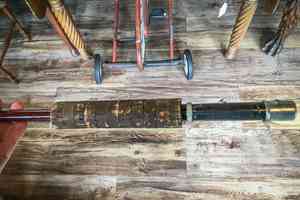
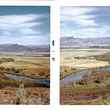

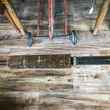
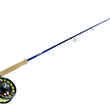





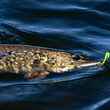
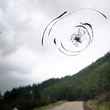



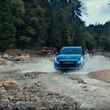
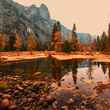




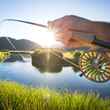



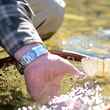
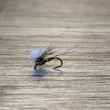


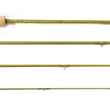
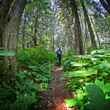
Comments
GregH replied on Permalink
Sheeesh! What are you doing? Just what need in the North Country more people. Kidding. Lots of water to explore and just a short drive to the east is the upper Androscoggin, the Magalloway and Rapid rivers. A lot of East Coast anglers dream of fishing out West, but they have classic waters right here almost in their backyards. With a little effort you can get away from the roads and people. Come explore and enjoy.
Thomas Doyle replied on Permalink
I would like to know if there is water in the rivers in northern New Hampshire in the fall? I visited a different area last year and there wasn't enough water to get my feet wet. I fished the holes as well as every other spot that I could think of trying to catch fish all with no success.
Pages